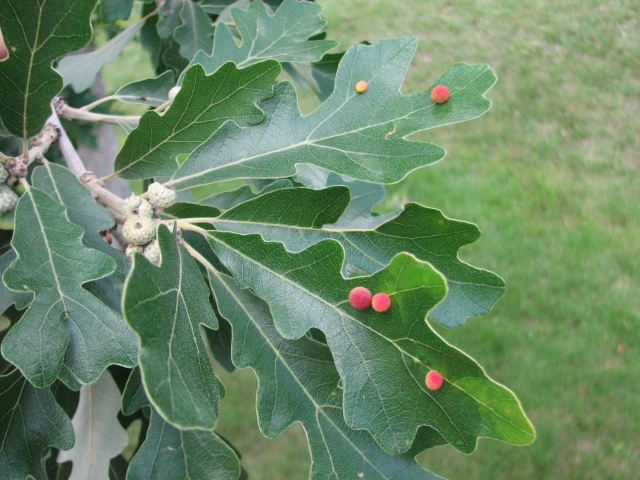Question
 Growths on oak leaf
Growths on oak leaf
Please see this picture as well
AnswerSounds like gall wasps. The insect lays its eggs on the leaf and secretes a chemical that causes the cells on the leaf to grow over the egg. The tiny wasp larvae feeds in the gall and hatches out in later summer. They really cause no health problem to the tree except for the leaves looking spotted.
One of the most commonly asked questions about galls is if they are harmful to the host plant. Despite their unsightly appearance on the foliage, which detracts from the normal beauty of a tree or shrub, galls generally cause little real damage. Infested leaves, which can be twisted or curled up, are usually able to carry out photosynthesis at near-normal levels. However, often the less striking and nonapparent galls that can occur on twigs, small branches and roots, can over time kill and weaken portions of a tree, as well as cause a general decline in plant vigor.
It should be remembered that despite the unattractiveness of galls, their presence usually is not harmful to the host plant. Consequently, a control response with chemicals in most situations is not recommended.
Gall producers are usually kept in check by natural enemies. However, in some situations where gall density has been heavy for several consecutive seasons, a chemical response may be advised. But effective insecticidal control of gall producers can be very difficult. Nonsystemic insecticides are virtually useless once the gall has been formed. In addition, the critical periods in the pest's life cycle when sprays would be most effective, such as during spring emergence and egg-laying periods, are still unknown or vague for many important gall-producing insects and mites.
I would say do not worry about this but keep the tree healthy by watering it and fertilizing the tree this Fall with 10-10-10 fertilizer at the rate of 1 lb per inch of trunk diameter scattered around the tree and watered in good.






